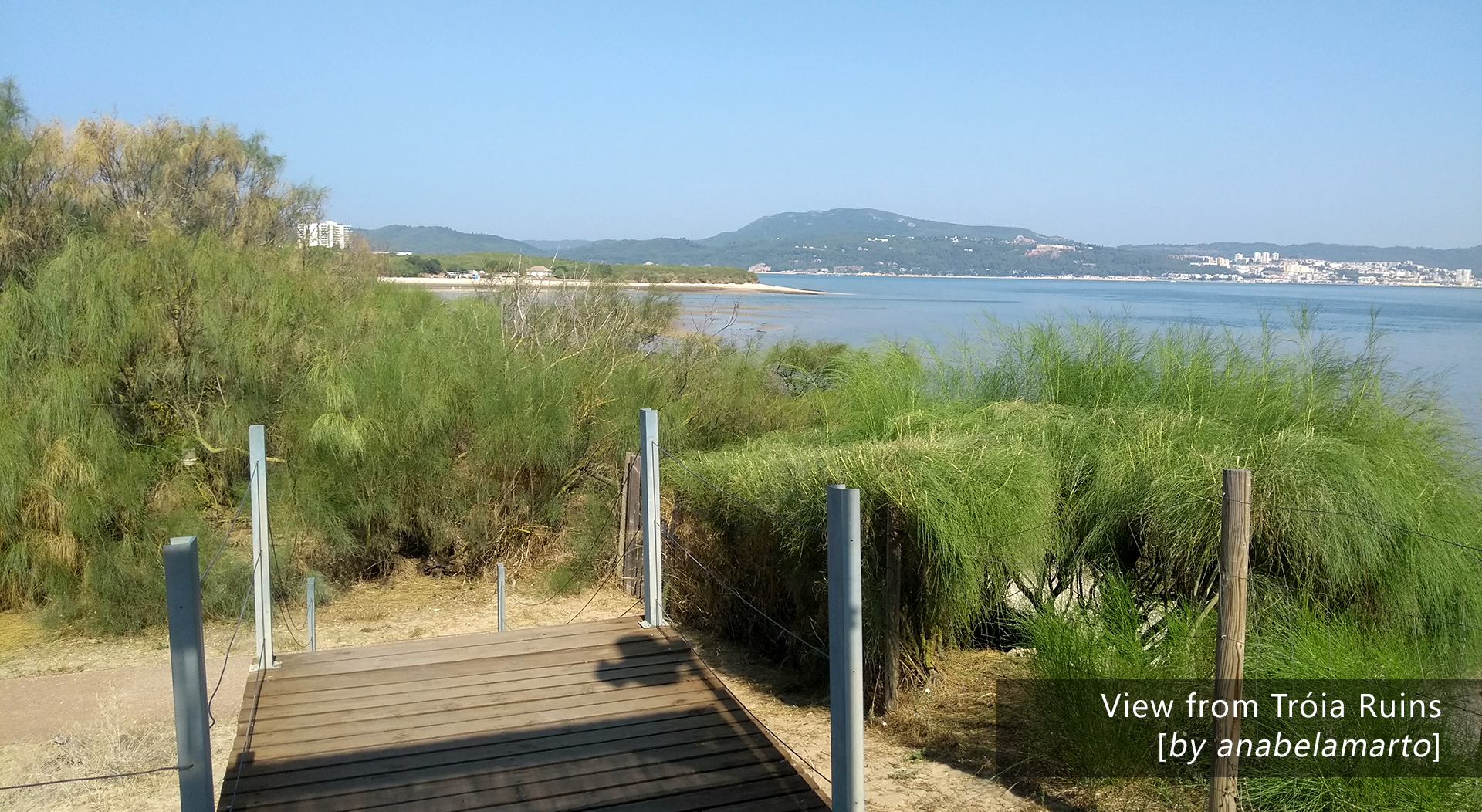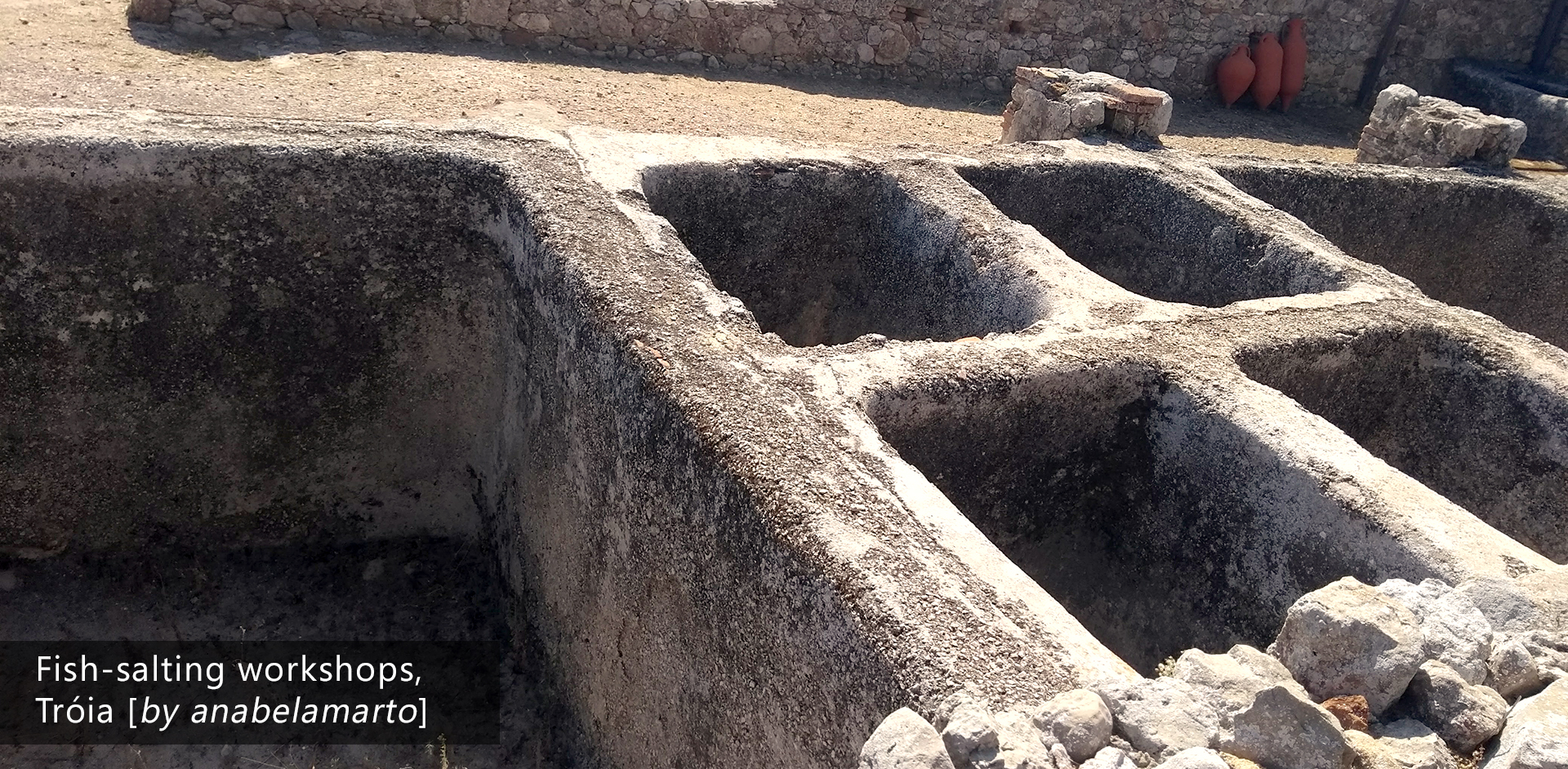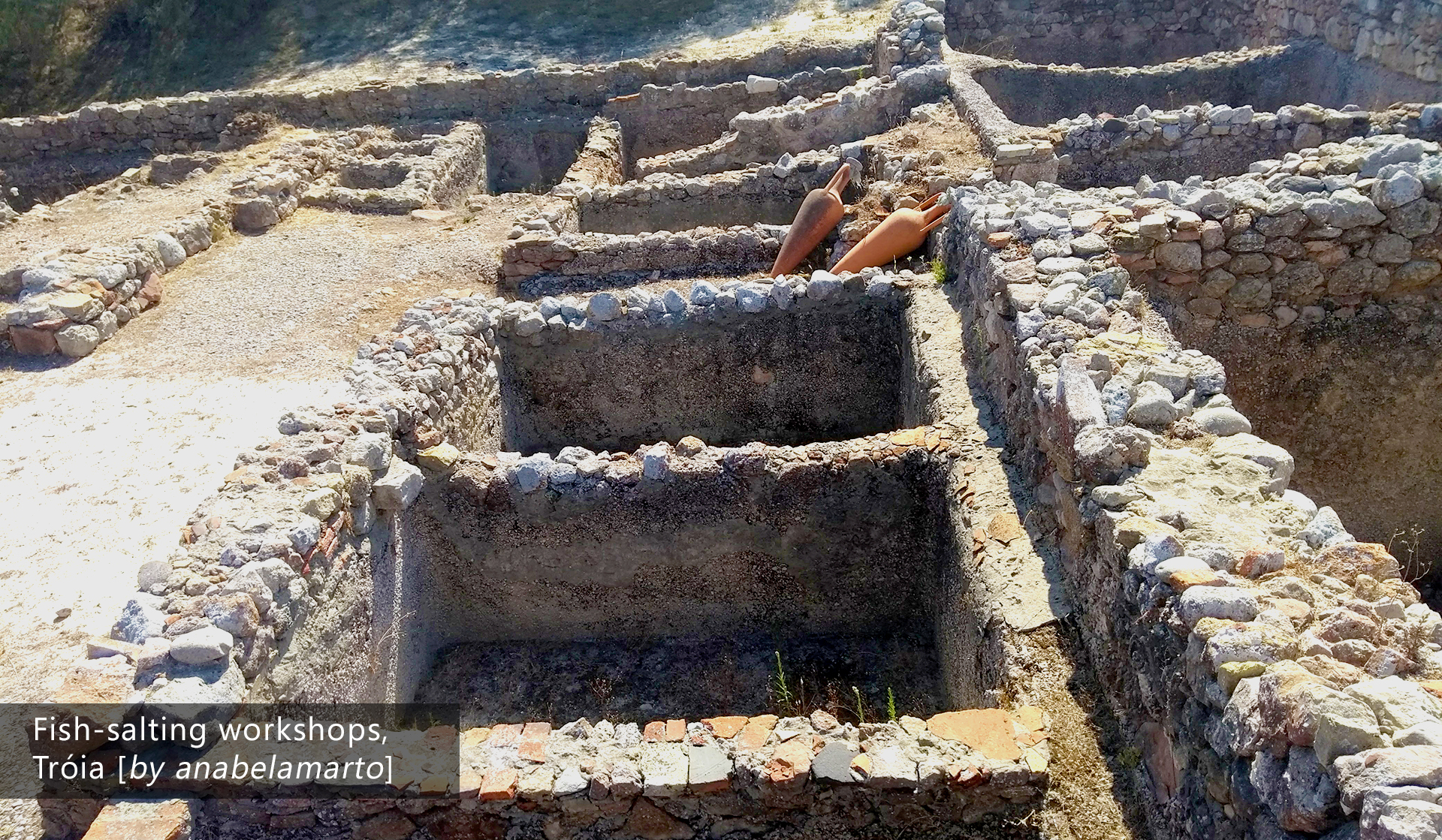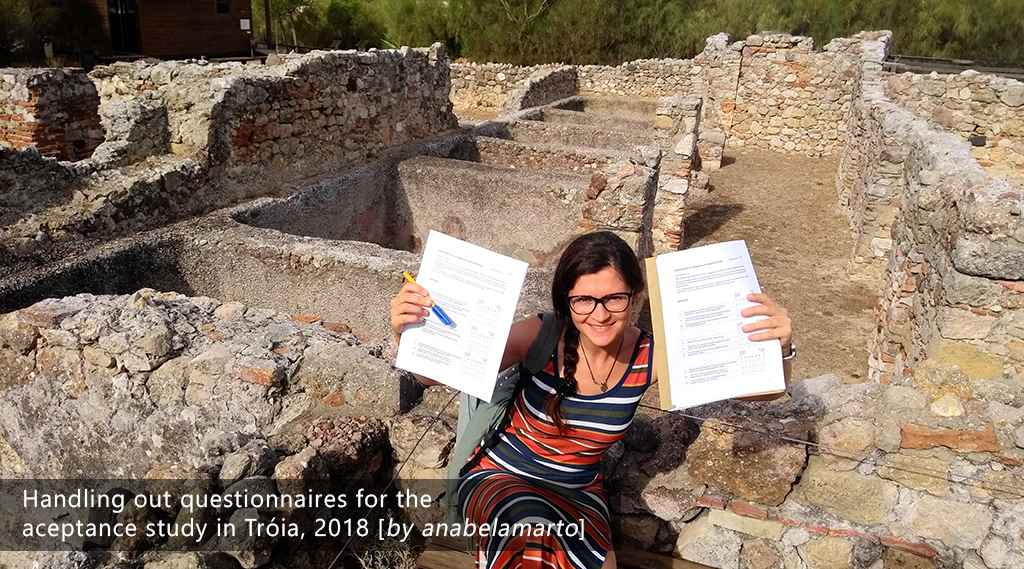Tróia, Garum for Everyone!

To develop an acceptance study related to the use of augmented reality in archaeological spaces, I had driven to Tróia. I found myself surrounded by the beauty and quietness of the river estuary, the richness of historical remnants from Roman Empire, and the friendliness of the staff. What a pleasant stay! Let me tell you about this amazing archaeological site.
The Roman Ruins of Tróia were a large fish-salting production complex built in the first half of the 1st century AD and became an urban-type settlement, composed by many fish-salting factories of different sizes.
The settlement
Situated on a narrow stretch of sand which would have been an island in Roman times, probably, the island of Achale (mentioned by the Latin writer Avenius), this roman settlement is also composed by houses, a bath complex, several cemeteries, a mausoleum and an early Christian basilica.

Fish-salting workshops
Profiting from the abundance of fish in the Atlantic and the outstanding salt production of the Sado estuary, it produced salted fish and fish sauces, among which was the famous garum.
A total of 27 workshops are known, we will talk about two of them.

Fish-salting workshop 1
Is the largest fish-salting workshop uncovered in Tróia and one of the largest in the Roman world. The excavations, since 1950s, demonstrate that this workshop had at least two phases: one large space with tanks along the four walls and a large central patio with a well (in the 1st and 2nd centuries), and smaller workshops that have been divided (in the 3rd century).
Fish-salting workshop 2
Smaller than workshop 1, it is believed that in its much smaller tanks, different products must have been prepared. This workshop was also divided in the 3rd century AD into two smaller workshops.

Baths
Certainly, belonging to the owner of the fish-salting factory, this bath complex ensured bathing facilities for the owners as well as for foremen and workmen, freeman or slaves.
The heated area of the baths had a hot area (caldarium), next to a furnace (praefurnium) and a tepid room (tepidarium), giving way to the cold area (frigidarium).
Mausoleum
According to the practice of cremation, typical of Roman culture, a mausoleum was built with niches on the walls for funerary urns. At the end of the 2nd century AD, a new practice of inhumation was adopted and, on the ground, tombs were built for placing corpses in graves.
Necropole
Necropole is the given name for ancient cemeteries, when the folk dropped the creamtion habits. The walls of a rectangular construction nearby could be a chapel for performing funerary rituals.

On top of a dune made of sand and garbage which had accumulated behind the mausoleum, inhumations were buried in tombs constructed of brick and stone. These tombs have a typical Christian orientation, heads to northwest and feet to southeast.
At a later point in time, among the thombs, were burried many children in amphorae.
The residential area: Rua da Princesa
Rua da PRincesa is the only residential are aknown so far in the settlement of Tróia. This archaeological area owes its name to Queen D. Maria I, who, while still a princess, carried out the first known excavations in Tróia.

Several buildings were aligned along the cost line with an excellent view (as you can see in the following picture). The buildings that were uncovered had ground and first floor levels.

My experience
I visited this wonderful space for two times: the first time because I wanted to include this archaeological space in my study; the second, because I loved this place and I wanted to come back.
In my second visit there, a school was also visiting the space and they were playing this treasure hunt game, it seems to be very fun! And it was so amusing watching these little kids so enthusiastic about decoding the clues related to the Roman times and conconquering the final treasure: a delicious sauce fish, alluding to garum.

A total of 34 visitors kindly participated in my study and contributed for a better understanding related to acceptance and intention to use augmented reality in archaeological sites.
Want to know more?
Roman Ruins of Tróia are worth your visit, for individual visitants, and also for schools with their fun and didactic school programs. You can find more information about this archaeological site in their website: Roman Ruins of Tróia.
Historical Review
This article was reviewed by Patrícia Brum, Archaeologist at Troiaresort. She is also a researcher in Instituto de História Contemporânea, of Faculdade de Ciências e Humanas, Universidade Nova de Lisboa, and a secretary-general at ICOMOS Portugal.
 SensiMAR
SensiMAR